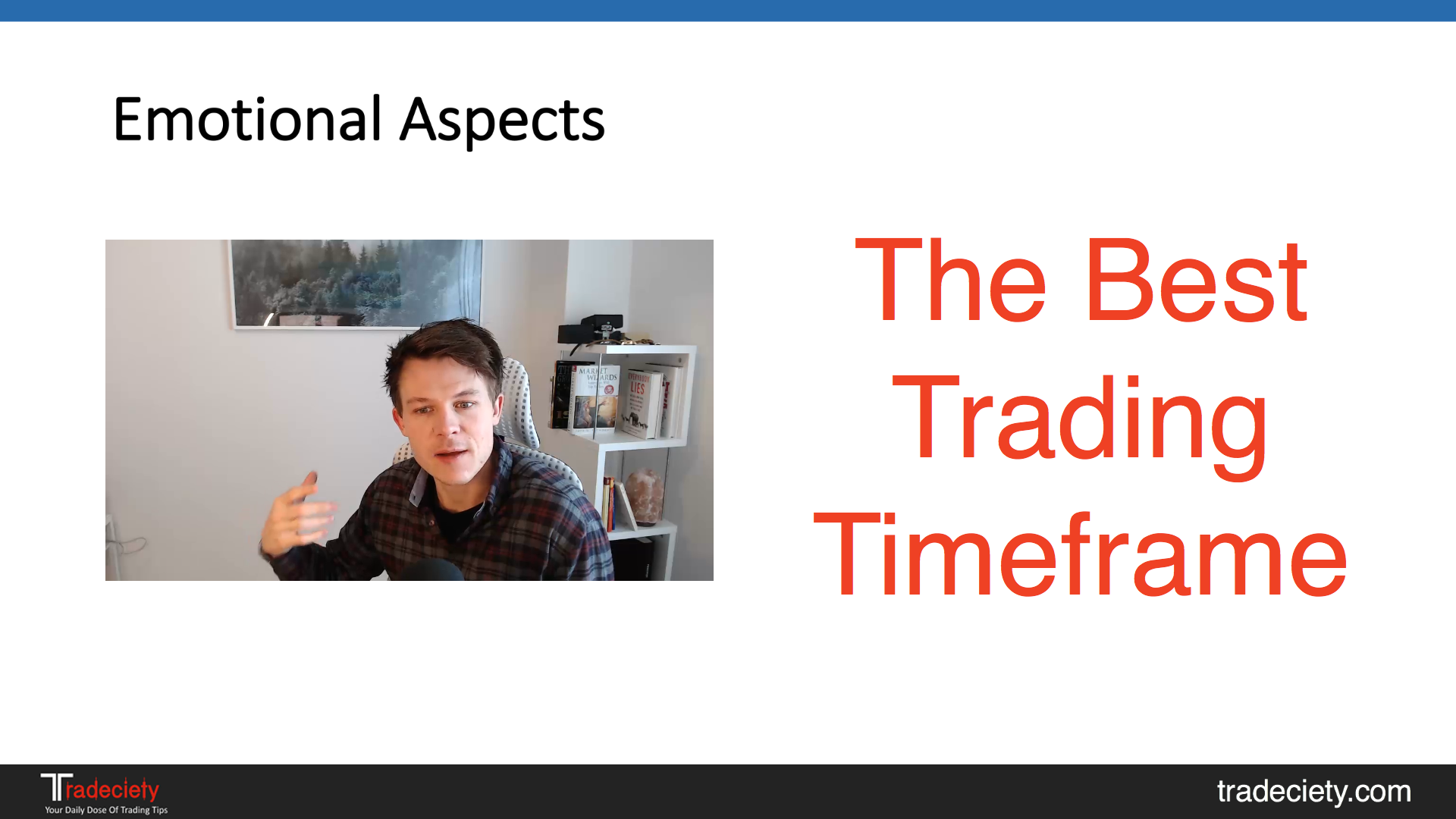3 min read
Scientist Discovered Why Most Traders Lose Money – 24 Surprising Statistics
“95% of all traders fail” is the most commonly used trading related statistic around the internet. But no research paper exists that proves this...

“Which is the best timeframe?” is maybe the most common question I get every day and I want to address it finally and hope to provide some tips on how to approach the timeframe choice.
Typically, traders choose between the higher timeframes (1H+) and the lower timeframes (<1H) when picking their timeframe(s).
It is very important to understand the differences between the individual timeframes so that you can pick the ones that work well for your personality type and complement your strengths.
You do not want to be all over the place and focusing on a certain set of timeframes usually makes for a more consistent trading approach.
Many traders make the mistake of continuously dropping to lower timeframes during their trading. Often I see that a trader says he trades the higher timeframes but then I see him lurking around the 15min or even 5minute timeframe because he wants to “finetune” his trades.
Although having a multi-timeframe approach can be helpful, it is best if you just focus on a maximum of 2 closeby timeframes. For me personally, that means that I am on the 4H and Daily and I usually never go lower when trading those two. Moritz, on the other hand, uses the 5min and 15min as his two daytrading timeframes.
First, ask yourself whether you are good at making decisions fast under pressure or if you are better at longer-term strategic thinking?
Second, are you OK with taking fewer trades and holding them for longer periods or do you need the action every day and don’t mind to get in and out of trades faster?
You can already see, the differences between the skillsets a trader needs to bring to the table differ significantly for low and high timeframes. Make sure to observe yourself and be aware of where you fit in.
Timeframes and emotions go hand in hand and the timeframe you choose has a huge impact on how emotions impact your trading.
Are you ok with being patient and can you wait for longer periods until you get a trade or do you easily get bored when not having a signal all the time?
Do you quickly recover from losses and can move on to the next trades without being influenced or do you need time to process a loss and pick yourself up again? A huge issue many day traders have is that they believe they need the constant action but they can’t process losses fast enough and are always in reactionary mode during the day and easily fall into the revenge-trading trap.
Higher timeframe traders have time to walk away from the charts, digest a loss and clear their minds. This can be a huge advantage for emotionally unstable traders.
Also, day traders on the low timeframes must be able to focus during their trading sessions. If focus is a problem for you, then being a day trader will give you a hard time when you are easily distracted, unorganized and then end up chasing price.
First, you must understand that you can basically trade any system on any timeframe. A head and shoulder pattern works the same on the higher as on the lower timeframes. Moving averages, trendlines, support/resistance, candlesticks or any other indicator is completely neutral and can be applied to any timeframe. It simply does not matter!
But now you might say “But I lost money using the X trading technique on the higher timeframes…” As yourself: was it really the “system” that did not work out or was it YOU that messed it up. 99.99% of the time, it’s not the system that is the issue, but the trader himself.
Where the timeframe choice makes a difference is when it comes to intra-day volatility. On the lower timeframes, things can sometimes move very quickly whereas you have a more smooth price development.
Also, news impact the lower timeframes more but you can easily navigate around or just sit out a news event on the lower timeframes.
Some traders report that they have a lower winrate on the lower timeframes, they can also overcome variance much faster. When you get more trades, losing streaks will not last as long and you get more chances to make up for it.
Finally, the spread has a different impact as well. On the lower timeframes, the spread can make up a significant part of your profits whereas the spread isn’t too meaningful on the higher timeframes.
As you can hopefully see by now, picking the correct timeframe has to be done with caution and the “best” timeframe will be different for every trader.
The goal of this article is to highlight how the different timeframes affect a trader and how you can choose the best timeframe for you based on understanding your strengths and weaknesses.

3 min read
“95% of all traders fail” is the most commonly used trading related statistic around the internet. But no research paper exists that proves this...

3 min read
Trendlines can be great trading tools if used correctly and in this post, I am going to share three powerful trendline strategies with you.

3 min read
Choosing the right trading journal is essential for traders wanting to analyze performance, refine strategies, and improve consistency. In this...